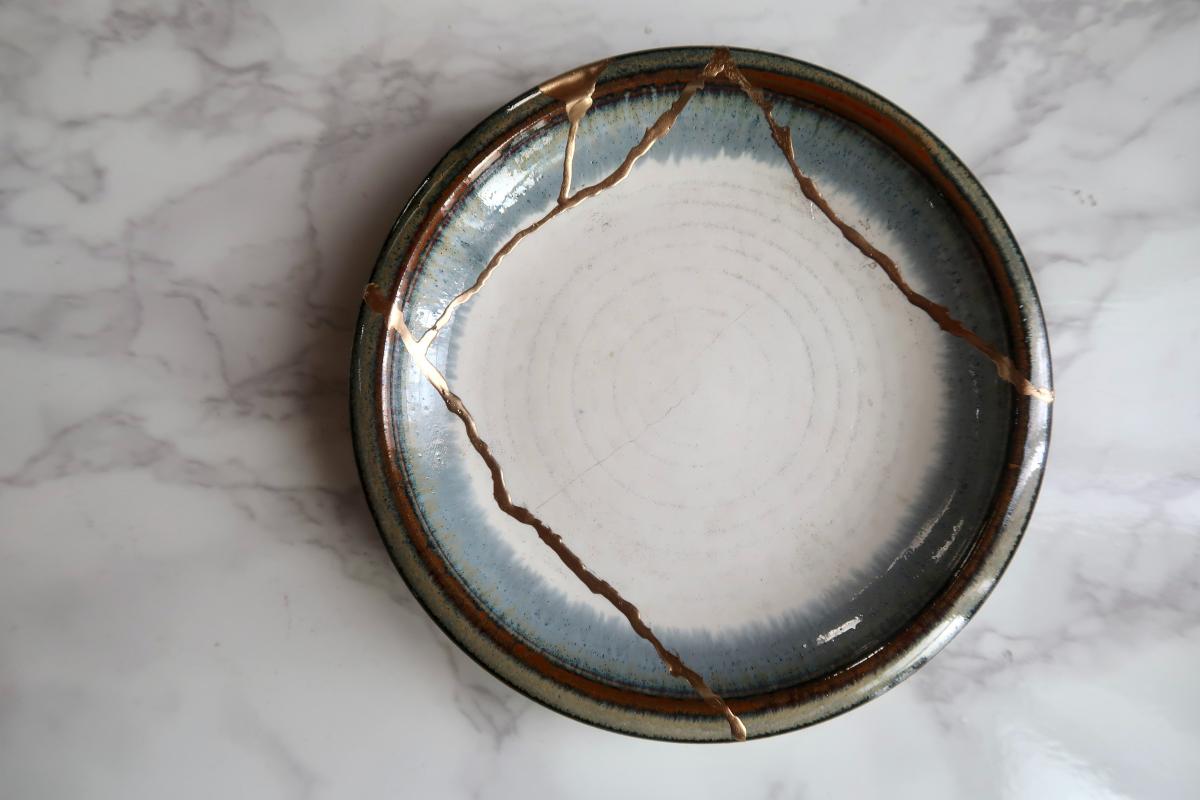 We all accidentally break things. We drop plates, snap pencils, or get angry and speak to the people we love in unkind ways. But sometimes we can glue our plates back together, tape our pencils so they’re whole again, and offer a heartfelt apology when we’ve been hurtful.
We all accidentally break things. We drop plates, snap pencils, or get angry and speak to the people we love in unkind ways. But sometimes we can glue our plates back together, tape our pencils so they’re whole again, and offer a heartfelt apology when we’ve been hurtful.
“Repair” is a concept with deep and winding roots. It comes from the Latin word reparare, which simply means to prepare something again. In the Japanese art form of kintsugi, ceramic cracks are filled with gold and silver, and in Judaism the concept of tikkun olam, which means “repair of the world” in Hebrew, is often related to actions for social justice. United States-based movements for land back and reparations seek repair in a country founded on the devaluation of Indigenous and Black land and lifeways.
When we repair things, we don’t always have to start from scratch: sometimes there are instructions to look up, or a trusted adult or friend to turn to for advice. In this activity, we’re going to write our own instructions for how to repair something. But these won’t be boring instructions, like how to fill in a Scantron sheet or do your history homework. No—these instructions will also be a poem!
- Brainstorm: Think of some things you have broken or damaged recently. It could be a physical object, like a torn pair of jeans, or something more emotional, like a fight with a friend, sibling, pet, or adult. Try to come up with at least five examples, and be specific.
- When you’re done, choose one item on your brainstorm list to write a poem about. Circle it.
- Answer the following questions about the topic you chose:
- How would you describe this item? What does it look, smell, feel, taste, and/or sound like? (If it’s something that isn’t concrete, like a friendship, use your imagination to fill in these details!)
- What does it feel like to repair this thing? How might the person or thing that is the recipient of the repair or attempted repair feel?
- What would you want others to know about repairing your chosen item?
4. When you’re done answering the questions, you’re ready to write your poem! Start by titling it, “How to repair <chosen item>.” Try to incorporate some of your answers from the three questions above into your poem.
If you need an example for inspiration, here’s one:
How to repair a torn-up letter
- Gather all the fluttering pieces of paper, or as many as you can. Put them in a pile, in a place where the wind won’t blow them away.
- Lay them out on a clean sheet of paper, on a hard surface like a desk or table. Try to fit the pieces together like a puzzle. As you do, feel the soft edges of the torn paper. Do you feel soft and torn, too?
- When the pieces are in the right place, glue or tape (with clear tape!) each piece down to the paper below. Peel the sticky glue or bits of tape from your fingers.
- Now, here’s the hard part: read the letter. If you already read it—before tearing it up—read it again. Let yourself feel however you’re going to feel.
- Go to the freezer and get yourself a scoop of chocolate cherry ice cream! (That always makes me feel better, at least.) And then …
- Get a clean sheet of paper. Take out your favorite pen or pencil. Start drafting a reply.
Photograph by Riho Kitagawa.
